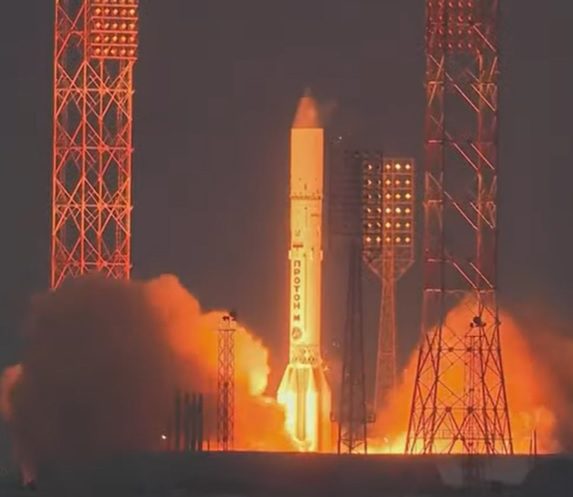Russia launched a Proton M/Briz M vehicle from the Baikonur Cosmodrome, near Tyuratam in Kazakhstan at 1207 GMT on 13 December, but not everything went to plan. The launch vehicle was carrying the Express AMU-3 (Ekspress-AMU 3) and Express AMU-7 (Ekspress-AMU 7) communications satellites.
After the Briz M (Breeze M) upper stage made the last of its five firings, the Express AMU 7 satellite was deployed first 17 Hours and 50 minutes after the launch, while the Express AMU-3 satellite was deployed after 18 hours and seven minutes. However, it later became apparent that the Briz (Breeze M) had not made the final burn for long enough and had been shut down early, leaving the satellites short of their intended orbit.
The satellite pair achieved a 52,810 x 16,325 km orbit and an inclination of 1.68 degrees. While this was pretty much on target for the apogee (target apogee was 52,872 km), it was about 2,000 km less than the planned perigee (target perigee was 18,714 km) and about 1.5 degrees more than the planned inclination of 0.23 degrees. The inclination error is the most serious in terms of energy and some will have to be used to achieve the circa 36,000 km circular operational geostationary Earth orbit, employing the satellites’ high efficiency electric thrusters. However, the amount of propellant needed for this recovery is expected to be within reserve margins, and so no reduction in the design life of 15 years each is expected for either of the satellites. No claim for insurance loss is thus likely to be made, despite a three-month delay in the start of their operational capability.
Both satellites were built by the Russian satellite constructor ISS Reshetnev with the communications payload built by Thales Alenia Space Italia with transponders operating in Ku-, L- and C-bands.
On the same day, showing the Russians how it should be done, China successfully launched a Long March 3B/G3 vehicle from the Xichang Satellite Launch Centre in China at 1607 GMT. The vehicle was carrying the Tianlian 2-02 data relay communications satellite on its way via a similar transfer orbit to its slightly inclined geosynchronous Earth orbit. This five-metric-ton satellite is built by CAST.
David Todd contributed to this report.









